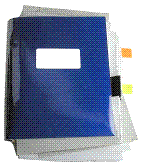Monday’s are when I post about financial planning basics, but this week I have to go back to step one in our financial planning guide. In step one of financial planning I stated to organize your finances to make financial planning easier, I received couple of questions about how to exactly organize your finances, so I thought it would be a good idea to discuss organizing finances in a little more detail before moving on to the next step of financial planning.
Four step guide: How to Organize Your Finances.
Step 1 What to keep and what to shred
Handling personal finances can mean a lot of paperwork, the bank statements, investment statements, receipt for various things etc. The first step in organizing your finances is to determine what you need to keep and what can be shred. This will probably be a topic in itself, but some important items to keep are:
various things etc. The first step in organizing your finances is to determine what you need to keep and what can be shred. This will probably be a topic in itself, but some important items to keep are:
Bank Statements
Investment Statements
Insurance Policies
Deeds
Prospectus
Step 2 File Documents
Ones you have determined what you need and what you don’t need you will have to develop a system to file things to organize your finances. If you already have a system great (share with us) if not you can use the 3 tier system.
1. You will need one file for “current documents”:
In here you will keep documents you will need on hand for this year, so all your current bank and investment statements and T-slips will go in the “current document” bin. This you will need to keep handy as you will regularly add documents to it and will need it for filling your taxes.
2. You will also need one file for documents you don’t need immediately:
In here you will basically hold on to documents that might be needed in the future, but not anytime soon. Ideal time to move files from current tier to the second tier would be tax time. Ones you have filed your taxes, file all the documents with your notice of assessment in this file. Remember you may need to provide it to Revenue Agency if requested in the next 3 years. Every three years or so you can remove those files to an archived filed or just shred them if not needed.
3. Lastly you will need a file to hold very important documents:
In here you will hold very important documents that are not necessarily needed on day to day basis, but are important and hard to replace. Such as:
Life insurance applications and Policies
Deeds
Will and Power of Attorneys
Marriage and Birth Certificates
And any other documents that are hard to replace.
Step 3 Organizing Incoming mail
Organizing finances means organizing mail. We receive a lot of mail, some junk some important, so organizing incoming mail as it arrives can save you a lot of headache and running around later on. This is why it is important to keep your “current file” handy, as you receive your mail file the current documents in the current file and shred the rest. Many times in the past have I lost important statements and only realized the loss during tax time and given myself headaches, so do yourself a favour and organize your mail as it comes in.
Step 4 Use Technology
This is a somewhat optional step, you can use technology to organize your finances and make your life a lot easier. With today’s technology and personal finance software, organizing finances can be a lot less time consuming. If you using any software great it will already save you a lot of time, if not you may consider using one. Further I highly recommend scanning your documents as you file them, this will ensure you have at least an electronic copy in case of fire, theft or any other loss. Moving electronic files can be a lot easier than hard copies, however make sure you save them in a very secure location and back things up on regular bases.
Bonus:
I also strongly suggest you create a master directory of your personal finances and keep it in a very secure location and give someone access to it. In this directory you should include all your financial information, such as bank accounts, investment accounts, accountant and lawyers’ information. You should include your bankers, brokers, investment advisors, accountants and lawyer’s names and phone numbers. Save all these documents in a secure location such as safe deposit box at your bank and instruct a close family member or friend on how to get access to it. You can keep an electronic version of this directory as well; make sure you give instructions to someone to access it if needed. This will insure the information is accessible to someone in case you cannot access it.
These are some things I have picked up over the years in terms of organizing finances; do you have any other suggestions?
